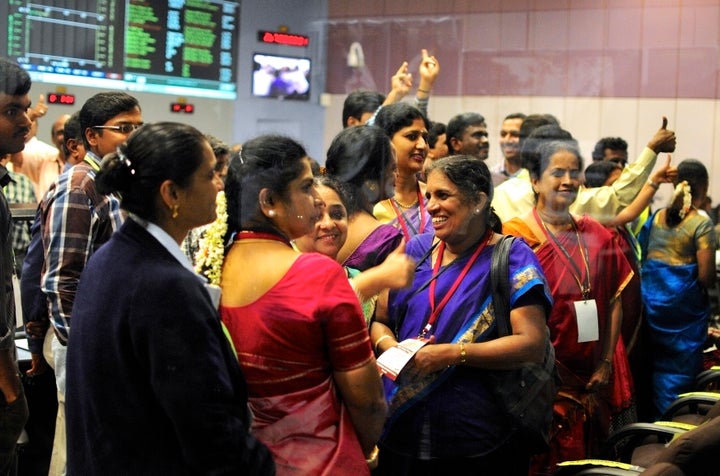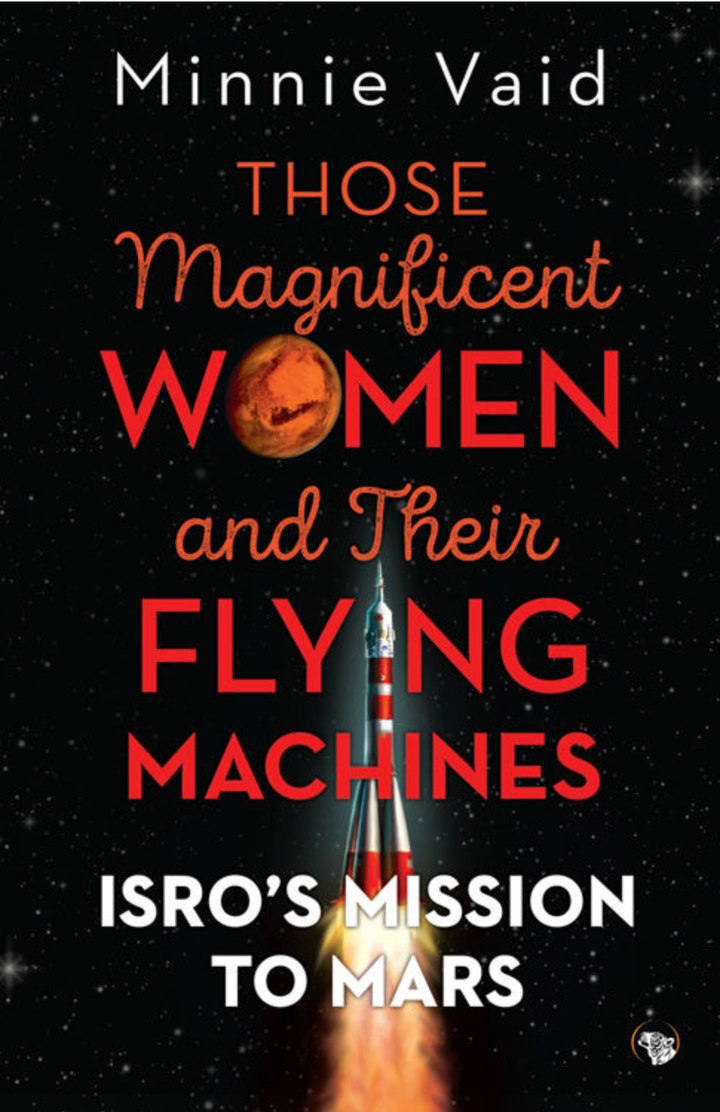
Apart from going public on social media, the other striking feature of this mission was that it allowed the country to see women scientists upfront for the first time, dispelling long-held stereotypes of the fuzzy-haired Einsteinian male scientist. ‘You know, we know Mars is for men. Now we have proved that Mars is not only for men,’ Arunan jokes. ‘When we formulated a young team for MOM, the time given to us was just eighteen months. We needed the bubbling energy of the younger generation. We had a lot of problems that needed to be solved to complete the mission successfully. The women’s team had worked on Chandrayaan-1 [ISRO’s mission to the moon in October 2008] and other challenging earth missions. MOM was a calculation-intensive mission. The navigation or mission aspects called for iteration [repetition of a mathematical procedure] calculation. Some of the women are very good in pure mathematics. Through all of our manoeuvres, designs and calculations, the women’s team stood by their decisions. Their accuracies were fabulous. I did not see them slipping even once in their calculations. In reviews [there were multiple reviews during MOM’s eighteenmonth duration] you have to be able to justify your decisions and calculations. You need to be convincing for the reviewing committee. This particular team, including Nandini and Ritu, was steadfast,’ Arunan claims.
Nandini Harinath remembers the suspense and the excitement at the time of the MOM team selection. She wondered whether it would be sanctioned at all—the costs involved were high and the project had no direct social application, unlike other ISRO satellites—and if Women from Mars Those Magnificent Women and Their Flying Machines 20 the study team would translate into the project team. ‘The Prime Minister’s speech on 15 August confirmed that the project had been sanctioned. And then the rumours began—who would be the project director? Who would be part of the team? As speculation floated around—we are a big team of 3,000 people at the URSC—you keep hoping, but till you actually know, you don’t really want to believe it,’ Nandini laughs.
Nandini was in the thick of another mission at the time—as operations director for RISAT-1 (Radar Imaging Satellite), India’s first microwave imaging satellite at ISTRAC—when she was asked to return to URSC to be one of the ‘focal points’ of the Mars mission. ‘We weren’t designated, we were just told to start working on it from Day One. “Find out what others have done and do what you’re supposed to do”—those were the orders. And that started the mad race right from the first hour,’ recalls Nandini. She quickly wound up her pending work and began downloading information and studying the data available.
‘We were a big team, with two deputy operations directors instead of one, Ritu and I, looking after different systems. We would have frequent meetings about what each of us had found. Most of us in the team were first-timers for this kind of a project.’ They had approximately fifteen months, from start to finish, to build an autonomous satellite with no prior knowhow.
Ritu Karidhal had finished her work on the launch of RISAT-1, when she was called by her group director, V. Kesava Raju, and given a deadline to get the Mars spacecraft ready so that the final mission could be accomplished in eighteen months. 21
Ritu elaborates on the formidable task they faced in 2012: ‘I had worked on Chandrayaan-1 but not as part of the core team. In any case, Mars was a totally different project where we had to go beyond the earth’s sphere of influence and gravity. It was an interplanetary mission, so we were very excited.’
‘The excitement over the Mars mission was natural,’ says Arunan. In a country like India, which was using different techniques for the first time (in Asia) where others had failed, the whole nation was enthusiastic in its support. ‘Moreover, Mars is seen as some kind of possible colonization later on, so everybody is more interested in it than in Saturn or Jupiter or other missions.’
MOM Project Manager Moumita Dutta agrees: ‘This mission triggered immense curiosity. Everywhere I go the first question asked is, “Does life still exist on Mars?” followed immediately by, “In the film The Martian we saw people going to Mars. So can we think of going and living there some day? Is it possible?” I say that nothing is impossible.’
‘Everything was new to us. As mission designers we were working for the main core or what we call “bus” system of the spacecraft which was to travel from earth to Mars. [Once the craft started revolving around Mars, the payloads designed by SAC scientists like Moumita and Minal would come into play]. For us the challenge lay in managing the entire mission itself. Moreover, since any control or command would take a minimum of twelve to twenty-four to forty-two minutes to reach the other end, the spacecraft had to be very, very smart and autonomous,’ says Ritu.

Excerpted with permission from Those Magnificent Women And Their Flying Machines: ISRO’s Mission on Mars, Minnie Vaid, Speaking Tiger.